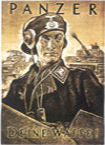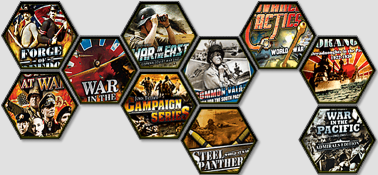marcbarker
Posts: 1213
Joined: 7/6/2008
Status: offline

|
About the US Cavalry
Cavalry groups were usually assigned to corps, but were occasionally attached -- by squadron -- to divisions. Cavalry was primarily intended for reconnaissance missions. However, during the war they were usually employed in defensive, economy of force, security, or screening missions. Armored field artillery, engineer, and tank destroyer units reinforced the cavalry groups for most missions.
Interestingly, the cavalry groups were almost never called to perform their primary duty: Later analysis showed that pure reconnaissance missions accounted for only 3 percent of their activities. The remaining 97 percent of missions assigned included: defensive operations (33 percent); special operations "including acting as mobile reserve, providing for security and control of rear areas, and operating as an army information service" (29 percent); security missions "blocking, screening, protecting flanks, maintaining contact between units, and filling gaps" (25 percent); and offensive operations (10 percent).
Thirteen mechanized cavalry groups fought in Europe. They were the 2nd (2nd and 42nd Squadrons); 3rd (3rd and 43rd Squadrons); 4th (4th and 24th Squadrons); 6th (6th and 28th Squadrons); 11th (36th and 44th Squadrons); 14th (18th and 32nd Squadrons); 15th (15th and 17th Squadrons); 16th (16th and 19th Squadrons); 101st (101st and 116th Squadrons); 102nd (38th and 102nd Squadrons); 106th (106th and 121st Squadrons); 113th (113th and 125th Squadrons); and 115th (104th and 107th Squadrons). In addition, the 117th Squadron served with the Seventh Army in Southern France and the 91st Squadron served with the Fifth Army in Italy.
Finally, a number of separate mechanized cavalry troops existed, among them the 56th (which remained in the U.S.) and the 302nd assigned to the 1st Cavalry Division in the Pacific.
In addition to the mechanized cavalry, the US Army fielded a number of horse-cavalry units during the war, including the 1st and 2nd Cavalry Divisions and the 56th Cavalry Brigade with the 112th and 124th Cavalry Regiments (Texas National Guard), and the 26th Cavalry Regiment (Philippine Scouts). Of these, only the 26th Cavalry fought mounted, during the Campaign in the Philippines in 1941 and 1942. The 1st Cavalry Division, the 112th and 124th Cavalry all were sent to the Pacific, where they fought dismounted as infantry. Finally, the 2nd Cavalry Division was originally activated in April 1941 as a racially mixed division, with one 'Colored' Cavalry Brigade and one 'White' Cavalry Brigade. It was inactivated in July 1942 only to be reactivated in February 1943 as a 'Colored' Division. It was sent to North Africa where it was inactivated again in May 1944 with its personnel reassigned to service and engineer labor units.
|
 Printable Version
Printable Version












 ]
] 
 How many dam "cavalry charges" are you having per turn????
How many dam "cavalry charges" are you having per turn???? 


 New Messages
New Messages No New Messages
No New Messages Hot Topic w/ New Messages
Hot Topic w/ New Messages Hot Topic w/o New Messages
Hot Topic w/o New Messages Locked w/ New Messages
Locked w/ New Messages Locked w/o New Messages
Locked w/o New Messages Post New Thread
Post New Thread